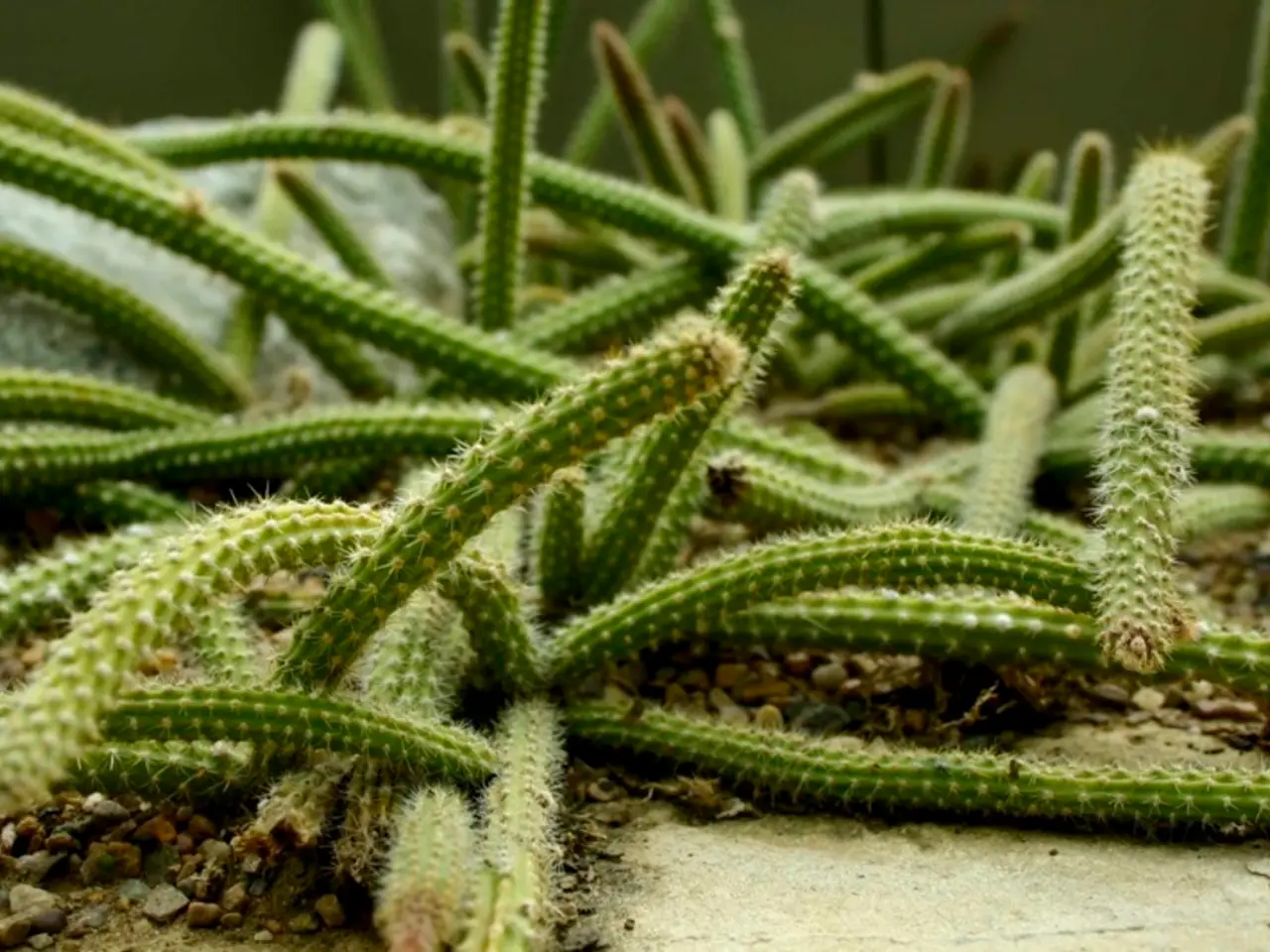Caring for Cacti: A Comprehensive Guide
In the world of cacti and succulents, maintaining a healthy collection requires understanding and addressing common pests and diseases. This article aims to help you identify, treat, and prevent common issues that could threaten your beloved plants.
Identification
Four common threats to cacti and succulents are mealybugs, nematodes (eelworms), scale insects, and rots.
Mealybugs are small, white, cottony insects often found on roots or crevices of plants. Root mealybugs tend to hide underground.
Nematodes (Eelworms) are microscopic worms that attack roots, causing unhealthy growth or rot symptoms.
Scale insects appear as small, brownish or grayish bumps on stems or leaves, often immobile and may have a waxy coating.
Rots manifest as soft, discolored, or mushy areas on stems or roots, often due to overwatering or poor drainage.
Treatment
Mealybugs can be eliminated using a Q-tip dipped in 70% isopropyl rubbing alcohol, which kills them on contact. Repeat as needed, and neem oil sprays can assist in broader infestations.
Nematodes can be treated by removing all soil from the roots and repotting using pasteurized soil or a mix. Chemical treatments are also available, but they should be used carefully.
Scale insects can be removed gently with a soft toothbrush or fingernail, followed by treatment with neem oil or insecticidal soap to prevent re-infestation.
Rots require removing all affected tissue with sterilized tools and ensuring better drainage, reduced watering frequency, and avoiding waterlogging. Fungicidal treatments may be necessary in severe cases.
Prevention
To prevent these issues, use well-draining soil mixes specifically designed for cacti and succulents. Regularly inspect plants for early signs of pests or diseases, avoid overwatering, quarantine new plants, use clean pots and sterile tools during repotting, maintain good air circulation, and choose pots with adequate drainage holes.
Proper Potting Techniques
When repotting, gently remove old soil, inspect roots, trim any rotted parts, and position plants in bright, indirect sunlight suitable for their species. Use a soil mix containing sand, perlite, or pumice combined with organic matter for aeration and drainage.
By following these practices, you can support healthy roots, minimise the likelihood of common pests like mealybugs, nematodes, scales, and rots, and ensure the survival and vitality of your cacti and succulents.
Maintaining a healthy lifestyle for home-and-garden plants such as cacti and succulents not only necessitates the understanding of common pests and diseases but also the implementation of effective prevention methods. Prevention strategies include using well-draining soil mixes, regular inspections, avoiding overwatering, quarantine of new plants, utilizing clean pots and sterile tools, ensuring good air circulation, and selecting pots with proper drainage holes.
Healthy cacti and succulent plants can thrive in a carefully cultivated lifestyle that mimics their natural environment, while minimizing the threats posed by common pests like mealybugs, nematodes, scale insects, and rots.




